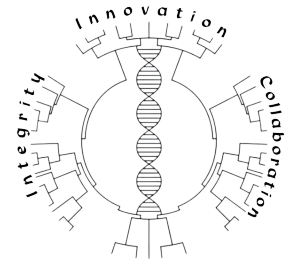Research Article
Pangenome of Aeromonas hydrophila Reveals Noticeable Heterogeneity in Antimicrobial Resistance
Afsah Pervaiz, Zabeehullah, Muhammad Osama Sajjad, Hafiz Waleed Zafar
Published on : June 2025 | Volume : 2 Issue : 1
Abstract :
Aeromonas hydrophila is a Gram-negative bacterium found in freshwater and marine environments. It is an opportunistic pathogen capable of infecting fish, amphibians, and humans. The species causes gastrointestinal illness and septicemia in humans and is a major concern in aquaculture due to motile Aeromonas septicemia (MAS). Increasing antibiotic resistance in A. hydrophila has raised global health concerns. This resistance is linked to plasmids, insertion sequences, and other mobile elements that facilitate horizontal gene transfer. This study aimed to investigate the genomic diversity of A. hydrophila using pangenome analysis. This study analyzed 31 complete or high-quality genomes retrieved from NCBI databases. Genomes were re-annotated using Prokka. Average Nucleotide Identity (ANI) confirmed species identity (>97%) for 27 genomes. PIRATE was used to classify genes into core and accessory clusters. Snippy and IQ-TREE were used for core genome SNP detection and phylogenetic tree construction. Population structure was inferred using hierBAPS. Mobile genetic elements including AMR genes, CRISPRs, insertion sequences, plasmids, and prophages were identified using specialized tools. PCA and correlation analysis were performed to evaluate associations between genomic features. ANI analysis confirmed species-level similarity among strains. Genome size ranged from 4.3 to 5.3 Mb with stable GC content (~61%). The pangenome was open, with high accessory gene diversity. Several strains displayed unique accessory gene profiles. Phylogenetic analysis revealed distinct clades, some showing high divergence. Core SNP-based phylogeny provided strong resolution without strict host or geographic clustering. AMR genes varied across countries, with Chinese strains showing the highest burden. IS elements and plasmids were more frequent in AMR-rich strains. CRISPRs were rare, while prophages were common. PCA grouped strains based on AMR and genomic features. BAPS analysis identified three major SNP-based clusters. This study highlights the genomic plasticity and heterogeneity of A. hydrophila. Core and accessory genome analysis revealed evolutionary trends. Associations between AMR and mobile elements were evident. These findings support the role of horizontal gene transfer in shaping resistance patterns. This work enhances understanding of A. hydrophila evolution and informs future surveillance and control strategies.
